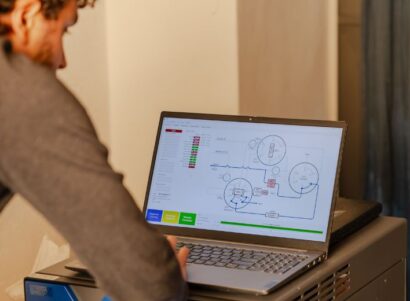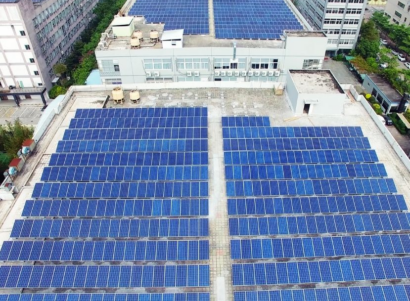A groundbreaking study released Sept. 28, 2017, by ReThink Energy NJ and New Jersey Conservation Foundation (NJ Conservation) lays out a scenario detailing how New Jersey can cut harmful carbon emissions from generating electric power in half by 2030. Importantly, the study found that New Jersey can increase renewable energy and energy efficiency substantially by 2030 without increasing the cost of electricity.
“A Clean Energy Pathway for New Jersey,” a comprehensive report conducted by a team of energy experts from the Institute for Energy and Environmental Research and PSE Healthy Energy, details an affordable approach for New Jersey to reduce harmful emissions through continued growth of solar energy, development of offshore wind, and gains in energy efficiency. It offers the most detailed cost analysis of implementing these strategies to date.
“There is broad public support for moving to clean, renewable energy, and this report provides achievable, affordable, and essential steps we can take to realize that future much sooner than many people think,” said Tom Gilbert, campaign director, NJ Conservation and ReThink Energy NJ. “The only question is, what are we waiting for?”
The analysis offers a three-part strategy: improving energy efficiency savings to 2% per year; continuing to expand solar power at historic growth rates, and developing 3.25 GW of New Jersey’s vast offshore wind potential. As this strategy is implemented, reliance on natural gas — the primary source of emissions from the electric sector — would be reduced.
“Many people assume that there are no viable, affordable alternatives to harmful fossil fuels, but this research shows that there are,” said Barb Blumenthal, Ph.D., research coordinator, NJ Conservation and ReThink Energy NJ. “The cost of offshore wind has declined dramatically in the past few years. New Jersey has an opportunity to create a new industry, save ratepayers money through energy efficiency, and reduce emissions.”
New Jersey does not currently have a strategy to achieve the 2050 goals of the Global Warming Response Act, enacted in 2007. The report describes the Clean Energy Pathway that would cut in-state carbon emissions from electric generation in half by 2030, putting the electric sector on track to achieve a 90% reduction in emissions by 2050. Aggressive adoption of renewable energy in the electric sector will be key to achieving the reduction in statewide emissions from all sectors, including transportation as required under the Global Warming Response Act.
“New Jersey can cost-effectively reduce its electricity sector carbon emissions 50% by 2030, using a combination of offshore wind, increased solar energy, and ramped up efficiency efforts,” said Dr. Arjun Makhijani, a co-author of the report and President of the Institute for Energy and Environmental Research. “The overall cost of doing so is similar to the present fossil fuel-intensive course, without factoring in the immense benefits of lower pollution and water use, and improved public health. Combining efficiency with renewable energy will be the key to saving ratepayers money.”
“Greater use of energy efficiency, solar, and the launch of offshore wind would set New Jersey on an achievable pathway to reduce the environmental, health and climate impacts of its power sector and lay the groundwork for attaining a deep reduction in carbon emissions by 2050. With careful planning, environmental equity and resilience are additional benefits,” said Elena Krieger, co-author of the report and director of the Clean Energy Program for PSE Healthy Energy.
“It’s clearer than ever that New Jersey must move forward with clean, renewable energy and energy efficiency if we want to meet our critical emissions reduction goals. We will continue to work tirelessly to redirect our state’s energy path to meet this goal — because there is no time to lose,” said Christopher “Kip” Bateman, New Jersey Senator (R-16).
“New Jersey needs to act urgently to address the threat of climate change and that starts with a well-informed, fact-based discussion about energy,” said Assemblyman Andrew Zwicker (D-16). “With this groundbreaking research, we have for the first time, real data on the table that show how realistic, achievable, and affordable it is to move more swiftly to renewable energy like wind and solar.”
“Having pioneered New Jersey’s clean energy programs at the BPU, I can say first hand that this report provides the critical, fact-based research that confirms what we already knew. Clean energy is not only affordable, it is essential to building our state’s economy with new businesses, good jobs, new technologies, and an energy future that reduces our impact on climate change. We can’t afford not to,” said Jeanne Fox, former president, New Jersey Board of Public Utilities.
New Jerseyans have made it clear that a clean energy future is the path they want. A recent Fairleigh Dickinson University PublicMind™ survey found nearly 90% of New Jersey voters feel renewable energy is important to the state’s overall health. Three out of five think the state is adopting renewables too slowly.













